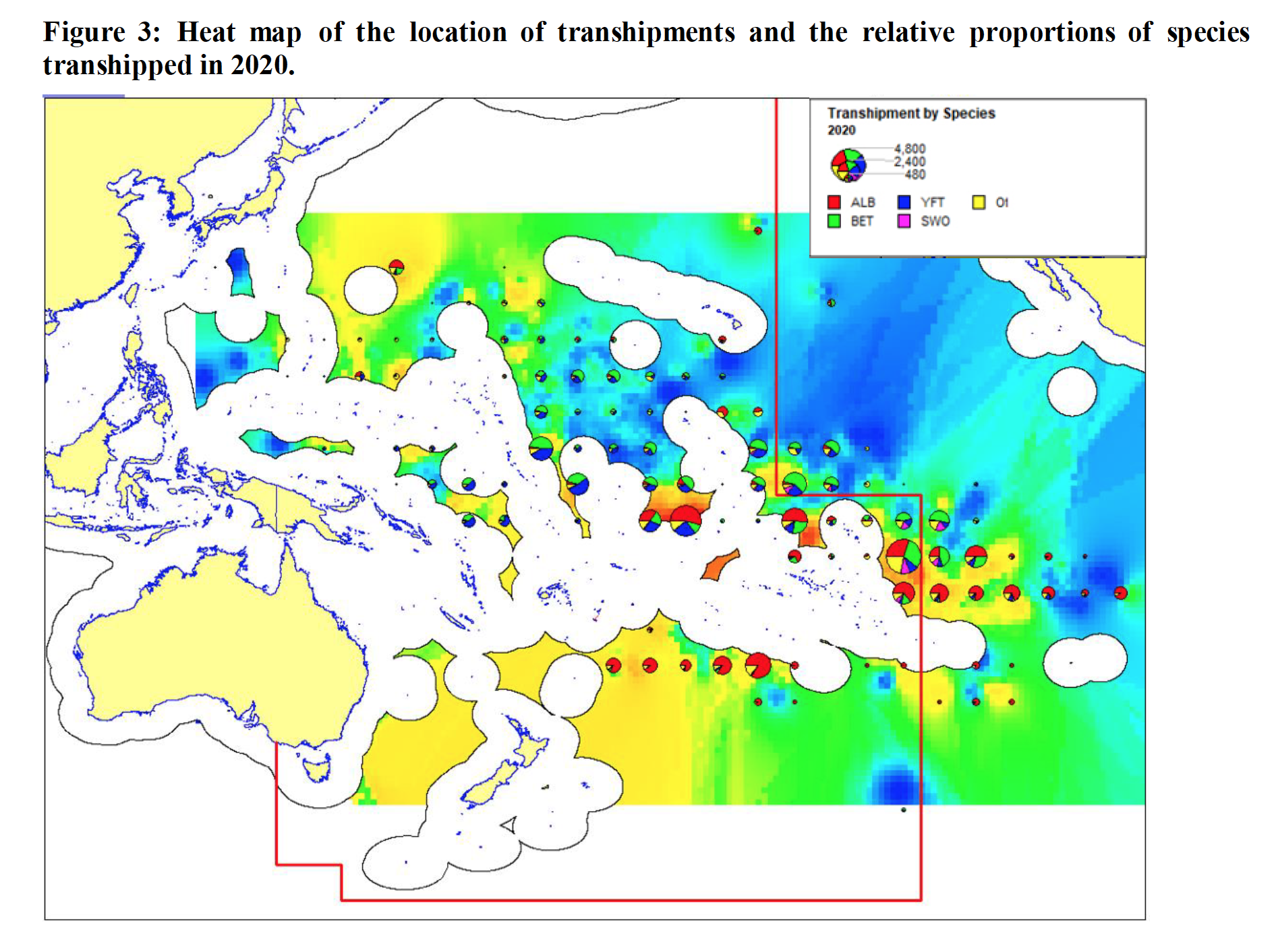I know, I’m very repetitive on this topic… but it does really pisses me off.
I have been working with the team in charge of the IUU quantification report 2020 update (soon to be released) and as 5 years ago. Still the area we have most problems.
Notice how most of these transshipments take place on the borders of EEZs, rather than in the most isolated areas of the high seas, where it really will be impractical.
Yes, we have now a Transhipment Intercessional Working Group at the WCPFC, yet its pace seems to be defined on geological timelines more than biological ones.
The Technical and Compliance Committee of the WCPFC starts today and the Annual Report on Transhipment Reporting is one of the dozens of papers and reports presented.
I have written ad nauseam on the problem here *this link will take you to plenty of explanations
The “rule” that " there shall be no transhipment on the high seas" is compromised by the loophole that allows unscrupulous DWFNs to assert that it is "impracticable" for certain vessels to comply. We've argued for years about how to define "impracticable", and we are still nowhere close to it.
All reported high seas transhipments were conducted by fishing vessels registered to just 4 countries and one fishing entity that NZ has different levels of engagement, vessels of China, Chinese Taipei (Taiwan), Korea, and Vanuatu accounted for almost 90% of those transhipments, with Japan for the rest. As 22 of the 24 registered longline vessels flagged by Vanuatu are owned by individuals or companies in China and Chinese Taipei, it may be possible to attribute an even greater portion of high seas transhipments to those two operators
In what is perhaps the only area I’ve seen where the “one China policy” actually works CN and TW work in perfect unison in this one.
The “good” news is that it seems to be a slight decrease in the numbers of transhipments reported…. But considering that there are no observers out there…. I’m highly dubious of the accuracy of that number. It would very convenient to show a reduction after we (PEW and others have been hammering on this for years) shown that transshipments have increased over 160% from 544 operations in 2014 to 1472 in 2019.
HS transhipments have become the norm not the exception for those DWFN, and that is the opposite that the WCPFC CMM indicates.
You can read the report if interested, but I point out only two things that my friend and colleague Tim Adams raised
"33% of the total catch of bigeye tuna taken by WCPFC longliners is transhipped on the high seas."
Looking back at the graphic posted above, it is interesting and totally hypocritical from the DWFN how most of these transhipments takes place close to the borders of EEZs, rather than in the most isolated areas of the high seas, where it really will be impractical.
This bullshit and totally hypocritical issue on HS transhipment is a low hanging fruit we should all put attention to and fully shame internationally the countries driving it!
